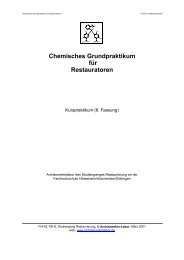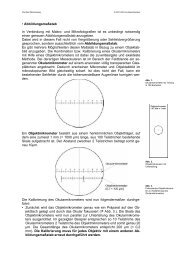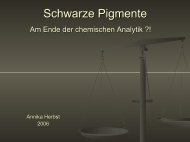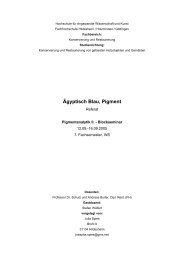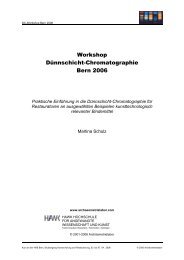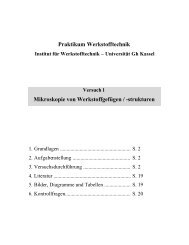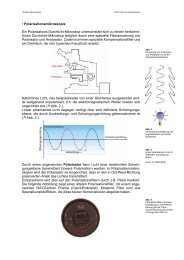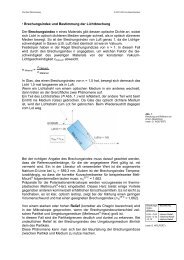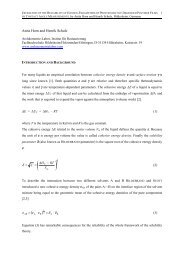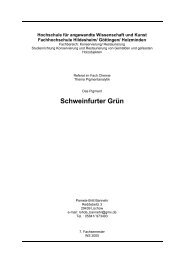Henrik Schulz* and Anita Horn, Archäomertrie-Labor der HAWK ...
Henrik Schulz* and Anita Horn, Archäomertrie-Labor der HAWK ...
Henrik Schulz* and Anita Horn, Archäomertrie-Labor der HAWK ...
You also want an ePaper? Increase the reach of your titles
YUMPU automatically turns print PDFs into web optimized ePapers that Google loves.
Manuscript, H. Schulz <strong>and</strong> A. <strong>Horn</strong>, Hildesheim, henrik.schulz@archaeometrielabor.com 4<br />
Finally we take into account pre-adsorbed molecules onto the surface of the solid S which are<br />
belonging to the outer fluid 2 (index: “S2”). Additionally to that pre-adsorption also coadsorption<br />
of other molecules out of the inner fluid 1 is possible. These adsorption<br />
phenomena are summarized by the so-called spreading pressure π. For the situation as<br />
mentioned above (pre-adsorption <strong>and</strong> co-adsorption) we could formulate:<br />
π = πS2,1<br />
The real but just adsorbed molecules decrease the interfacial tension γS of the ideal “bare”<br />
surface (nothing at all is adsorbed) <strong>and</strong> can be written to:<br />
γS2 = γS " πS2,1 (3)<br />
The combination of the equations (2) <strong>and</strong> (3) results in equation (4) that we shall use in the<br />
following discussion:<br />
γS " πS2,1 = γS1 + γ12⋅cos Θ (4)<br />
In Table 1 several situations of adsorption at the interfacial molecular level are summarized<br />
schematically. The sophisticated real situation is strongly simplified <strong>and</strong> reduced onto the<br />
main topic: distribution <strong>and</strong> spreading of the adsorbed molecules at the interfacial region.<br />
Table 1 also presents the schedule of the following experiments <strong>and</strong> investigations.<br />
To compare the different experiments that are summarized in Table 1 we make the following<br />
assumptions <strong>and</strong> postulate:<br />
Case 1:<br />
The wooden surface is still untreated by plasma (index “zero”, 0) <strong>and</strong> is h<strong>and</strong>led un<strong>der</strong> normal<br />
atmosphere of moisten air (index “V”, symbolized in Table 1 as circles). The part of pre-<br />
adsorption of water molecules (index “V”) is expressed by π0,V as:<br />
γSV,0 = γS,0 " π0,V (3.1)<br />
After a drop of the test liquid contacts the wooden surface (index “L”) the measured contact<br />
angle Θ = Θ0,LV = Θ0,V describes the YOUNG´s equation (2) in that manner:<br />
γSV,0 = γSL,0 + γLV⋅cos Θ0,LV (2.1)<br />
The combination of both terms as given above results in:<br />
γS,0 − π0,V = γSL,0 + γLV⋅cos Θ0,V (4.1)<br />
Because the statistically number of primary places of specific adsorption of water molecules<br />
onto the wooden surface before (π0,V) <strong>and</strong> after wetting (π0,LV) with the test liquid (based on<br />
water as solvent) remains fairly constant, we expect:<br />
π0,V = π0,LV



